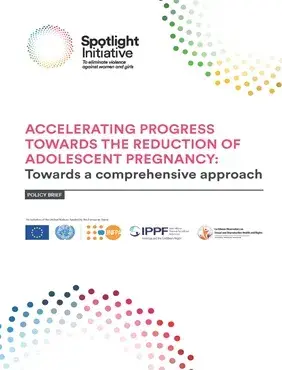of young people, hampering their psychosocial development, contributing to poor health outcomes for the girls and their babies, negatively affecting their educational and employment opportunities, and contributing to the perpetuation of intergenerational cycles of poor health and poverty. Pregnant adolescents 10-19 years old often face heightened health risks, compared to women aged 20 to 24 years, including eclampsia, puerperal endometritis and systemic infections. Pregnancy and childbirth complications are the leading cause of death among girls aged 15 to 19 years globally.
Pregnancy also has an impact on adolescent girls’ employment. For example, in Guyana, adolescent mothers were 13% more likely to retreat from the labour market than the adult mothers, have a 45% higher rate of unemployment than adult mothers, have a 10% lower monthly median income (representing USD 29.98 per month for each adolescent mother in 2019) and lower levels of educational attainment. This represents an estimated US$4,593,481 in losses with a consequential loss of US$1,036,244 in tax revenue and an additional US$420,108 lost due to maternal mortality. Unwanted adolescent pregnancies are a creature and progenitor of poverty and economic inequality with significant fiscal impacts for countries within the region. There is a need to respond not only through a human rights lens but also considering national and regional development, especially in achieving Sustainable Development Goals 3 and 5.
In the Caribbean region, adolescent fertility rates (AFR) were one of the highest in the world at 60.2 births per 1,000 girls aged 15-19 between 2010 and 2015. Despite a fall in the rate over the years, wide variations persist between sub-regions, countries, and within countries. To sustain the progress in reducing adolescent pregnancy, there needs to be a comprehensive approach.


